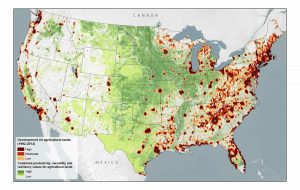
Figure 1: Agricultural land lost to urbanization from 1992-2012, provided by American Farmland Trust
According to the World Bank (2018) arable land has been declining in the United States for decades. In 1992 an estimated 20% of the US was arable land compared to only 17.2% in 2018. This loss of agricultural land has significant implications for food security, carbon emissions, water quality, and spread of invasive species (epa.gov; Houghton et al., 1999; Tu et al., 2020).
Urbanization is one main driver of cropland loss for several reasons. For one, agricultural land is easier to develop on than other land uses because it is already cleared and usually flat. This makes it cheaper, and may mean urban expansion prefers to develop on agricultural land. Another reason is that major cities tend to be located near agricultural areas because they needed to be ‘fed’ from the countryside. Finally, long-term social and economic trends have shifted people from the rural to the urban. Today, the majority of people live in cities, creating more demand for housing while reducing the number of people who care about what happens to the farmland (Tu et al., 2020).
Since 1992 urbanization has continued throughout the US and has been a significant contributor to cropland loss (Figure 1). To explore the relationship between cropland loss and urban expansion, I chose to look at Chicago. I chose Chicago for its location near a large area of cropland in the Midwest US, and because it is the third largest metro area in the US (US Census Bureau). Chicago’s history of urban expansion was initially dominated by the railroads and shipping, and more recently has been dominated by the interstate (Kim 2015). Since 1970, the process of urbanization in the Chicago metro area can be described as ‘suburbanization’ where most development happens away from the urban core, expanding the developed area (Kuang et al., 2014).
The objective of this study is to visualize and quantify the relationship between urban expansion and cropland loss in Chicago. Because of Chicago’s location and the growth of its suburbs, I expect urban expansion to be a major contributor to cropland loss.